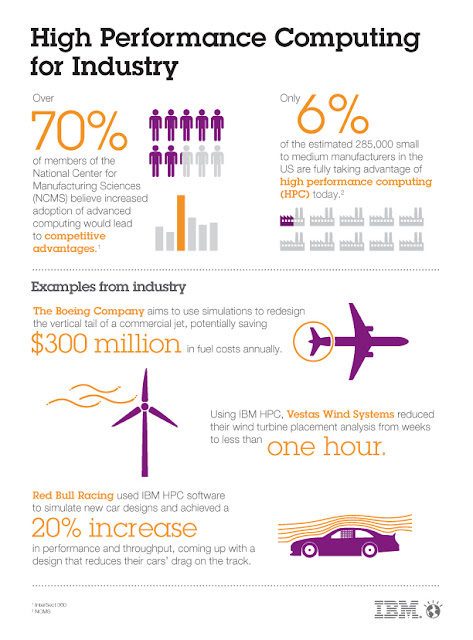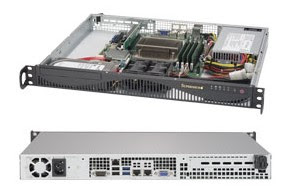8- Oracle :
Oracle Corporation is an American multinational computer technology corporation, headquartered in Redwood Shores, California. The company primarily specializes in developing and marketing database software and technology, cloud engineered systems and enterprise software products—particularly its own brands of database management systems. In 2015 Oracle was the second-largest software maker by revenue, after Microsoft. Oracle Servers
7- Dell :
Dell sold personal computers (PCs), servers, data storage devices, network switches, software, computer peripherals, HDTVs, cameras, printers, MP3 players, and electronics built by other manufacturers. The company was well known for its innovations in supply chain management and electronic commerce, particularly its direct-sales model and its "build-to-order" or "configure to order" approach to manufacturing—delivering individual PCs configured to customer specifications. Dell was a pure hardware vendor for much of its existence, but with the acquisition in 2009 of Perot Systems, Dell entered the market for IT services. The company has since made additional acquisitions in storage and networking systems, with the aim of expanding their portfolio from offering computers only to delivering complete solutions for enterprise customers.
6- Intel :
Intel Corporation was founded on July 18, 1968 by semiconductor pioneers Robert Noyce and Gordon Moore, and widely associated with the executive leadership and vision of Andrew Grove. The company's name was conceived as portmanteau of the words integrated and electronics. The fact that "intel" is the term for intelligence information also made the name appropriate.[4] Intel was an early developer of SRAM and DRAM memory chips, which represented the majority of its business until 1981.
5- Super Micro Computer :
Supermicro was founded in 1993 by engineer and current CEO Charles Liang. The company was incorporated in Delaware in August 2006 and had its IPO in March 2007. As of June 30, 2012, Supermicro employed 1,472 full-time employees and 31 consultants at its operations in the United States, Europe, and Asia with customers in over 89 countries. The company offers its products through value-added resellers, system integrators, and original equipment manufacturers, as well as through its direct sales force.
4- IBM :
IBM is an American multinational technology company headquartered in Armonk, New York, United States, with operations in over 170 countries. The company originated in 1911 as the Computing-Tabulating-Recording Company (CTR) and was renamed "International Business Machines" in 1924.
3- Cisco Systems :
Geographically disparate computers over a multi protocol router system, which was unheard of technology at the time. By the time the company went public in 1990, when it was listed on the NASDAQ, Cisco had a market capitalization of $224 million. Cisco was the most valuable company in the world by 2000, with a more than $500 billion market capitalization.
2- Lenovo :
Lenovo was founded in Beijing in 1984 as Legend and was incorporated in Hong Kong in 1988. Lenovo acquired IBM's personal computer business in 2005 and agreed to acquire its Intel-based server business in 2014. Lenovo entered the smartphone market in 2012 and as of 2014 is the largest vendor of smartphones in Mainland China. In January 2014, Lenovo agreed to acquire the mobile phone handset maker Motorola Mobility from Google, and in October 2014 the deal was finalized.
1- HPE :
HPE is an American multinational enterprise information technology company based in Palo Alto, California, founded on 1 November 2015 as part of splitting of the Hewlett-Packard company. HPE is a business-focused organization with four divisions: Enterprise Group, which works in servers, storage, networking, consulting and support; Services; Software; and Financial Services.
Oracle Corporation is an American multinational computer technology corporation, headquartered in Redwood Shores, California. The company primarily specializes in developing and marketing database software and technology, cloud engineered systems and enterprise software products—particularly its own brands of database management systems. In 2015 Oracle was the second-largest software maker by revenue, after Microsoft. Oracle Servers
7- Dell :
Dell sold personal computers (PCs), servers, data storage devices, network switches, software, computer peripherals, HDTVs, cameras, printers, MP3 players, and electronics built by other manufacturers. The company was well known for its innovations in supply chain management and electronic commerce, particularly its direct-sales model and its "build-to-order" or "configure to order" approach to manufacturing—delivering individual PCs configured to customer specifications. Dell was a pure hardware vendor for much of its existence, but with the acquisition in 2009 of Perot Systems, Dell entered the market for IT services. The company has since made additional acquisitions in storage and networking systems, with the aim of expanding their portfolio from offering computers only to delivering complete solutions for enterprise customers.
6- Intel :
Intel Corporation was founded on July 18, 1968 by semiconductor pioneers Robert Noyce and Gordon Moore, and widely associated with the executive leadership and vision of Andrew Grove. The company's name was conceived as portmanteau of the words integrated and electronics. The fact that "intel" is the term for intelligence information also made the name appropriate.[4] Intel was an early developer of SRAM and DRAM memory chips, which represented the majority of its business until 1981.
5- Super Micro Computer :
Supermicro was founded in 1993 by engineer and current CEO Charles Liang. The company was incorporated in Delaware in August 2006 and had its IPO in March 2007. As of June 30, 2012, Supermicro employed 1,472 full-time employees and 31 consultants at its operations in the United States, Europe, and Asia with customers in over 89 countries. The company offers its products through value-added resellers, system integrators, and original equipment manufacturers, as well as through its direct sales force.
4- IBM :
IBM is an American multinational technology company headquartered in Armonk, New York, United States, with operations in over 170 countries. The company originated in 1911 as the Computing-Tabulating-Recording Company (CTR) and was renamed "International Business Machines" in 1924.
3- Cisco Systems :
Geographically disparate computers over a multi protocol router system, which was unheard of technology at the time. By the time the company went public in 1990, when it was listed on the NASDAQ, Cisco had a market capitalization of $224 million. Cisco was the most valuable company in the world by 2000, with a more than $500 billion market capitalization.
2- Lenovo :
Lenovo was founded in Beijing in 1984 as Legend and was incorporated in Hong Kong in 1988. Lenovo acquired IBM's personal computer business in 2005 and agreed to acquire its Intel-based server business in 2014. Lenovo entered the smartphone market in 2012 and as of 2014 is the largest vendor of smartphones in Mainland China. In January 2014, Lenovo agreed to acquire the mobile phone handset maker Motorola Mobility from Google, and in October 2014 the deal was finalized.
1- HPE :
HPE is an American multinational enterprise information technology company based in Palo Alto, California, founded on 1 November 2015 as part of splitting of the Hewlett-Packard company. HPE is a business-focused organization with four divisions: Enterprise Group, which works in servers, storage, networking, consulting and support; Services; Software; and Financial Services.
































